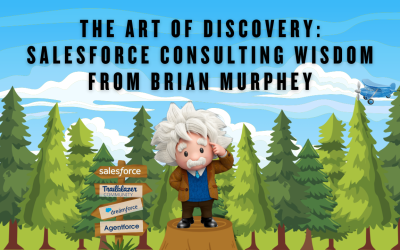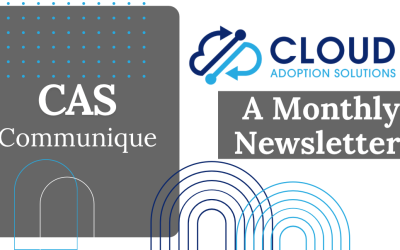Upload New Files Flow: CAS Come and See Video
Wouldn’t it be amazing if your field sales or service reps could upload pictures, documents, and other files to Salesforce? You can create an Upload Files button using screen flow in Salesforce – join Cory as he shows you how!
…and while you’re here: if you’re having Salesforce user adoption challenges, we have a brand new guide that takes you step by step through the principles of teaching adults technology, and drives you to develop a plan for implementation. It’s got room for you to make your own plan – check it out: https://cloudadoption.solutions/teach…
Contact us with your Salesforce challenges at info@cloudadoption.solutions – we love to help!
Cloud Adoption Solutions is a 100% woman-owned registered Salesforce partner, specializing in implementation, integration, and optimization for Technology, Healthcare/ Life Sciences, and Financial Services/ Professional Services organizations in the small and mid-commercial sectors.
VIDEO TRANSCRIPT:
Hi, this is Cory with Cloud Adoption Solutions. And today I’m going to be covering how to make a report on orphaned contacts or other objects. So in Salesforce, I’m going to go to the Contacts tab, and we’re going to take a look at all contacts. And here you can see, some of these contacts don’t have an account name, and those are considered orphan contacts in Salesforce, you can create contacts without an account.
To report on that requires a little bit of extra work. Because Salesforce out of the box doesn’t provide a contacts report, it provides an accounts with contacts report, which won’t work for this because it will not give us the ability to show contacts without an account.
So the first step, we’re going to go to the setup menu from the gear icon. And then in the Quick Find box, we’ll just type report, or you can type report types. And then we’ll go to report types. And click that.
And from here, we’ll make a new custom report type. And our primary object is going to be contacts. And we’ll give this a label. We’ll call it contacts without accounts.
And want to give a description as well. And we’ll start in the accounts and contacts category. And then under deployment status, we’ll deploy it so that we can actually use it. And we’ll hit Next. And on this screen, we’re just going to leave it like this. So we’re not going to go I’m not going to associate any other objects. And we’ll hit save. So now this custom report types created and we can use it back under the Reports tab.
So back in Salesforce, we’re gonna go to reports, new report. We’ll select all on the left, and then we’ll start searching for the Report Type Name. And then we’ll look for the custom one. So this contacts without accounts as the one we just made, and we will start that. I’m going to change the filters to show everything here. And then in our outline, we’re going to add the account name. Even though we only pick the contacts object, we still get that lookup field to the account. So we can add that to the report. And if we sorted by that, we can see which ones have an account which ones don’t. So even though we said contacts with added accounts as the Report Type Name, it still gives us the ability to look at the account name lookup field. And then we can filter on that field.
So we’ll go to the Filters tab. And we will add a filter for the account name field. And we’ll do account name equals blank. So we’re just going to do not put anything in that box. And then that will show us the contacts that don’t have an account. And we’ll add the contact ID in the creative by we can add any other fields we need to this report as well. But adding the ID will help out if we go to export this. And we need to do any data manipulation. So we’ll save and run the report. We’ll give it a name. We’re gonna call it orphan contacts.
And this is my dev. Org. So I don’t have a lot of report folders in here, so I’ll make one we’ll select that and then save the report. And here you can see those contacts that don’t have an account. For whatever reason, maybe they weren’t given an account to begin with. They were put in here just under the Contacts tab, or the account was removed from them for some reason.
Having the contact ID on there on this report will help if we export it to Excel. And then we can do any type of data manipulation. If we need to delete these records, that’s easily doable or if we want to associate them with a different account. Since we have that contact ID it’ll make that a lot easier.
Thanks for watching today. If you found this video helpful, please give us a thumbs up and remember to subscribe to our channel for Salesforce related tips and tricks. Again we’re Cloud Adoption Solutions; please reach out to us for any of your Salesforce needs. Thanks!




